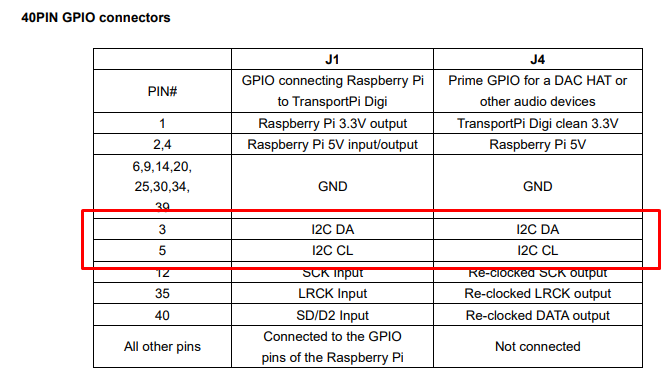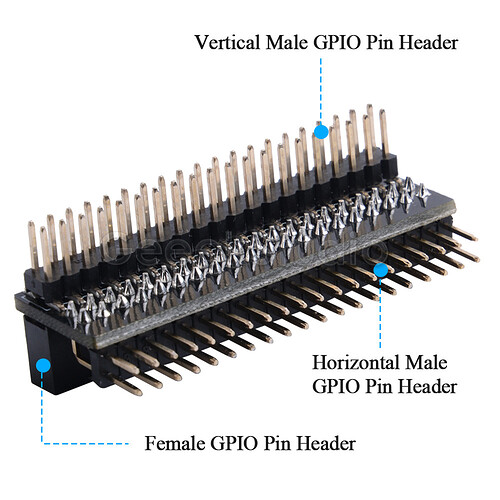Hi guys. Can I turn on the display of the Cyrillic font ?
Is this at all compatible with a SPI ssd1322. I’ve tried everything, the only thing I can get on my screen is snow…
The plugin does not support the SSD1322. A possible alternative might be to use the development version of mpf_oled, which does include support for this chip (but only supports a 128x64 display)
GitHub - antiprism/mpd_oled_dev: mpd_oled development version (unstable)
Please note that there is no Volumio plugin for the development version, and the installation instructions will only produce a working spectrum display when MPD is the player (e.g. when playing audio files and radio streams), but the spectrum area will be blank when using other players, e.g. Spotify. Also, this is development code and is unsupported.
Adrian.
A few weeks ago I bought an Ian Canada Transportpi Digi. Since then I’ve been trying to connect an OLED display with ssh1102 chip. Unfortunately, the Pi does not recognise the display via standard I2C pins of the Transportpi. I have tried to enable another I2C access on different pins, but also without success.
Does anyone have an idea what this could be?
Hi @chrisdus
You could check your display without the board, to ensure the display is not broken and/or the Pi is configured correctly. and also check your board documentation for what pins can be used. (Not relevant, but maybe your display chip is an SSH1106 or SSH107?).
Adrian.

The MonitorPI (display module from IanCanada) uses:

I checked several times on two different Pis (3b und 4b). Without the HAT it works on different ports, but with the HAT you can´t find the OLED with i2cdetect (ssh or in the plugin).
The chip is a SSH1106.
@Wheaten: I know the pdf for the Transportpi Digi and the Monitorpi.
Because of that pdf I wrote that I also tried to change to different GPIOs (23/24 and the native I2C0)
It might be worth asking for technical assistance from the Ian Canada Transportpi Digi manufacturer or seller.
I wrote in the DIY-community direct in the Ian Canada-thread, but I got no direct answer for my problem. I think, it`s because of selling the own products.
i had the same problem but with an ian canada isolator II and is FifoPiMa 1,5 reclocker.
the only way is directly to the gpio of the raspeberry pi.
I use for that a GPIO header and then on the non isolation side of the ian isolator II
only that way I got the mpd oled working.
I also had a problem with the 5 volt power supply for the mpd screen in that setup, in the previous setup no problem at all. also this 5 volts I had to get directly from the pi, it didn’t work from the fifopi ma non isolated site that was on top of the isolator II.
maybe it will also work with this … thing is just very expensive.
better is this.
Cheers Adrian, I tried the link you provided with your guidance but without success. I might have to go the i2c route although the SPI 1322 fits my project perfectly, I’m converting an old FM tuner and don’t think an i2c screen will fit. I’m currently using @Maschine2501 NR1-UI that does everything I want on the screen but unfortunately, it makes the playback stutter periodically. It’s a shame that @Maschine2501 isn’t still working on his code as it’s exactly what I need and looks awesome in my setup. I’ve been trying to strip out all of the parts of code that I don’t need to try and make a ‘Lite’ version but that’s beyond my copy+paste coding skills.
Thats a great idea. I will give it a try with the cheaper one. Its interesting, that we have the same problem with different type of Hats from the same manufacturer. I´ve read in the hifiberry-community about the hifiberry-digi+pro, because it uses the same driver. In this case it is no problem to add that OLED. So it must be a hardware-thing.
I also asked the question there on the DIY forum.
in my case the FifiPiMa and the Isolator II both have a non isolated side. only it simply doesn’t work despite the non isolated side being free on raspberry pi gpio pins and passing it on. so that clam simply does not apply to an mpd oled with i2c.
i use hifiberry-dac + pro as driver.
The funny thing is that I actually only wanted to test whether the digital transport via the separate hat is better than the native USB output. Now it actually sounds better and now I’m struggling with the OLED. But I don’t want to have to choose between the two. I want both, especially since I have already printed the case (incl. display).
Hi Matt,
I’ve been following your progress on the quad group, and I’ve been attempting to get all the required bits together to do something similar.
It seems this screen although perfect in almost every way, just won’t work on any plug-in available (and well supported) for volumio.
I thought I’d found some larger Oled’s that could be set to use i2c, but when looking deeper into the specs it looks like it’s just spi. I actually rage quit all my open tabs last night after copying and pasting some Chinese text into Google translate - the English listings said i2c and spi, but the actual manufacturer never mentions i2c in their spec sheet 
if only I knew something (anything  ) about coding - I’d be all over this. Please keep us updated if you find something / have a breakthrough!
) about coding - I’d be all over this. Please keep us updated if you find something / have a breakthrough!
For the time being I might just use one of the smaller displays - it’s a shame though as the 256x64 Oled is just right.
This guy has made an installation script that does it all for you. Start with a fresh install of volumio. You will need to SSH into your pi. Either create a SSH text file in the SD card before you first boot up volumio or use the volumio IP address with /dev on the end to enable ssh. This code needs a bit of work as it might not boot straigbt away as I didn’t have a rotary encode or buttons attached. So the service it uses to start the screen with throw a few errors. You will need to nano into the file and delete that line of code that is causing the error. The script that the chap has written takes ages to install so be patient but it works really well. I’m looking at making a fork so its a bit easier to use as there are parts I don’t need. You are right the SPI screen is a perfect fit and it will not work via the plugin, which is a shame. Try the code below  I’ll answer any questions you have. Send me a private message on here and I’ll ping you my number
I’ll answer any questions you have. Send me a private message on here and I’ll ping you my number
Hi Matt
What command did you try with the development version of mpd_oled? The base command for the 128X64 model should be
mpd_oled -o SSD1322,NHD_128X64,SPI
If you have the 256X64 display then I imagine that mpd_oled will display in half of the screen. The base command would be
mpd_oled -o SSD1322,NHD_256X64,SPI
Adrian.
Nothing like that lol
That’s very generous of you, thanks!
I fear it’s too far out of reach ability wise. I’m fairly confident I could muddle my way through and get it working with a bit of help - but 3 months later after a volumio update that brings it all crashing down, I simply wouldn’t have the skills to diagnose and fix the problem.
I think I’ll probably get myself another rpi & a screen, and have a go myself. It will definitely take longer, but hopefully I’ll come out the other side with enough knowledge to keep it running long term.
I do keep asking myself what the issue is with this screen though? What exactly is it that makes it so different to the other spi displays that are already supported?

